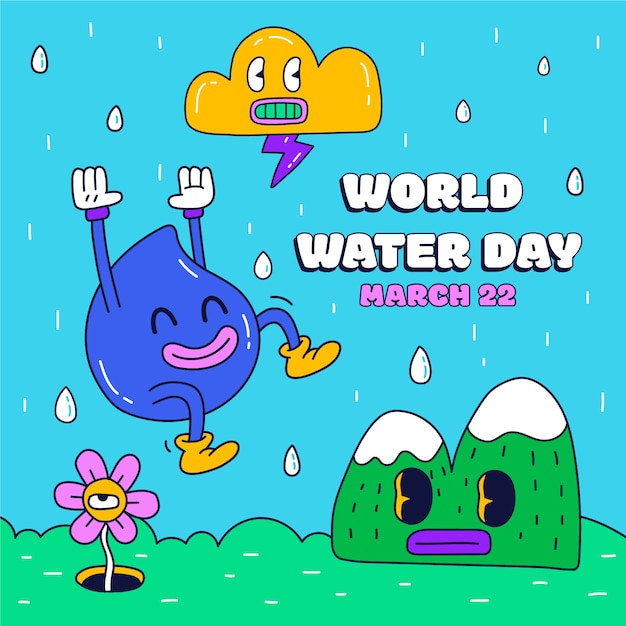

Water covers about 70% of the Earth’s surface.
Aquatic plants produce about 70% of the Earth’s oxygen.
The average person can survive without water for only three days.
Water is the only substance on Earth that naturally exists in all three physical states: solid, liquid, and gas.
Water expands when it freezes, which is why ice floats on top of water.
The Earth is often called the Blue Planet because of its abundance of water.
About 97% of the Earth’s water is in the form of saltwater in oceans and seas.
Only about 3% of the Earth’s water is freshwater, and the majority of it is locked up in glaciers and polar ice caps.
Water is essential for all living organisms, serving as a vital component in their cells and bodily functions.
Water has a high specific heat capacity, meaning it takes a large amount of energy to heat or cool it.
The Great Barrier Reef in Australia is the largest living structure on Earth, home to thousands of species of marine life.
Water can dissolve more substances than any other liquid, making it an excellent solvent.
The average American uses about 100 gallons of water per day, primarily for household needs like drinking, cooking, and cleaning.
Water is crucial for crop irrigation and agriculture, accounting for about 70% of global freshwater use.
Water scarcity is a growing global concern, with approximately 2.2 billion people lacking access to safe drinking water.
The Dead Sea, located between Jordan and Israel, is one of the saltiest bodies of water in the world, making it extremely buoyant and easy to float in.
Water has been used as a symbol of purification and healing across various cultures and religions.
The water cycle is a continuous process of evaporation, condensation, and precipitation that redistributes water on Earth.
The world’s largest waterfall is Angel Falls in Venezuela, with a height of 979 meters (3,212 feet).
Water has a unique property called surface tension, which allows insects like water striders to walk on its surface.
The Mariana Trench in the Pacific Ocean is the deepest part of the Earth’s seabed, reaching a depth of about 36,070 feet (10,994 meters).
Water’s transparency allows sunlight to penetrate through the oceans, supporting the growth of marine photosynthetic organisms like coral reefs and phytoplankton.
Approximately 71% of the Earth’s freshwater is inaccessible, stored in deep underground aquifers.
Water acts as a natural coolant, regulating temperature and preventing overheating in living organisms.
The Nile River, spanning over 6,650 kilometers (4,130 miles), is the longest river in the world.
Water can exist in supercooled states, remaining in a liquid form even at temperatures below its freezing point.
Water plays a crucial role in the transportation of nutrients and waste products within living organisms.
Hydroelectric power, generated by harnessing the energy of flowing water, is a renewable and clean source of electricity.
Water molecules are polar, meaning they have a positive and negative end, allowing them to dissolve and transport charged particles.
The average human body is composed of about 60% water, which is necessary for maintaining physiological functions.
Water has a high surface tension, enabling small insects like water boatmen to glide smoothly on its surface.
Water has been used for centuries as a method of transportation, enabling the exploration and trade between different civilizations.
The world’s largest freshwater lake by volume is Lake Baikal in Siberia, Russia.
Water can hold a large amount of heat energy without experiencing a significant temperature change, making it an effective temperature regulator.
The Great Barrier Reef is visible from space, stretching over 2,300 kilometers (1,430 miles).
Water is a vital component in the production of energy, whether through hydropower, nuclear power, or fossil fuel extraction.
The deepest freshwater lake in the world is Lake Tanganyika, located in East Africa and reaching depths of about 1,470 meters (4,820 feet).
Water-based activities like swimming, surfing, and water skiing provide both recreational enjoyment and physical exercise.
The duration and intensity of rainfall patterns are changing due to climate change, leading to increased flooding and droughts in various regions.
Water has a higher boiling point compared to many other liquids, making it a suitable medium for cooking and food preparation.
Spa treatments often incorporate water therapy, taking advantage of its relaxing and rejuvenating properties.
Water is used in many industrial processes, including manufacturing, cooling, and cleaning.
Water has excellent thermal conductivity, allowing it to transfer heat efficiently in heating and cooling systems.
The Pacific Ocean is the largest and deepest ocean on Earth, covering an area of about 63,800,000 square miles.
Water serves as a habitat for countless species of fish, mammals, plants, and microorganisms, creating lively and diverse aquatic ecosystems.
Around the world, coffee enthusiasts enjoy Monin coffee concentrate since it is a multipurpose product. Conveniently combining…
The Importance of Choosing the Right Shower for Your Bathroom Renovating your bathroom can be…
Usain Bolt holds the record for the fastest 100-meter sprint in history.Bolt was named Sportsman…
Love is in the air... and it smells suspiciously like chocolate!Roses are red, violets are…
Life's a beach, take a picture and relax.Sun, sand, and salty kisses. That's what beach…
Hungary is home to the largest thermal water cave system in the world.The Rubik's Cube…